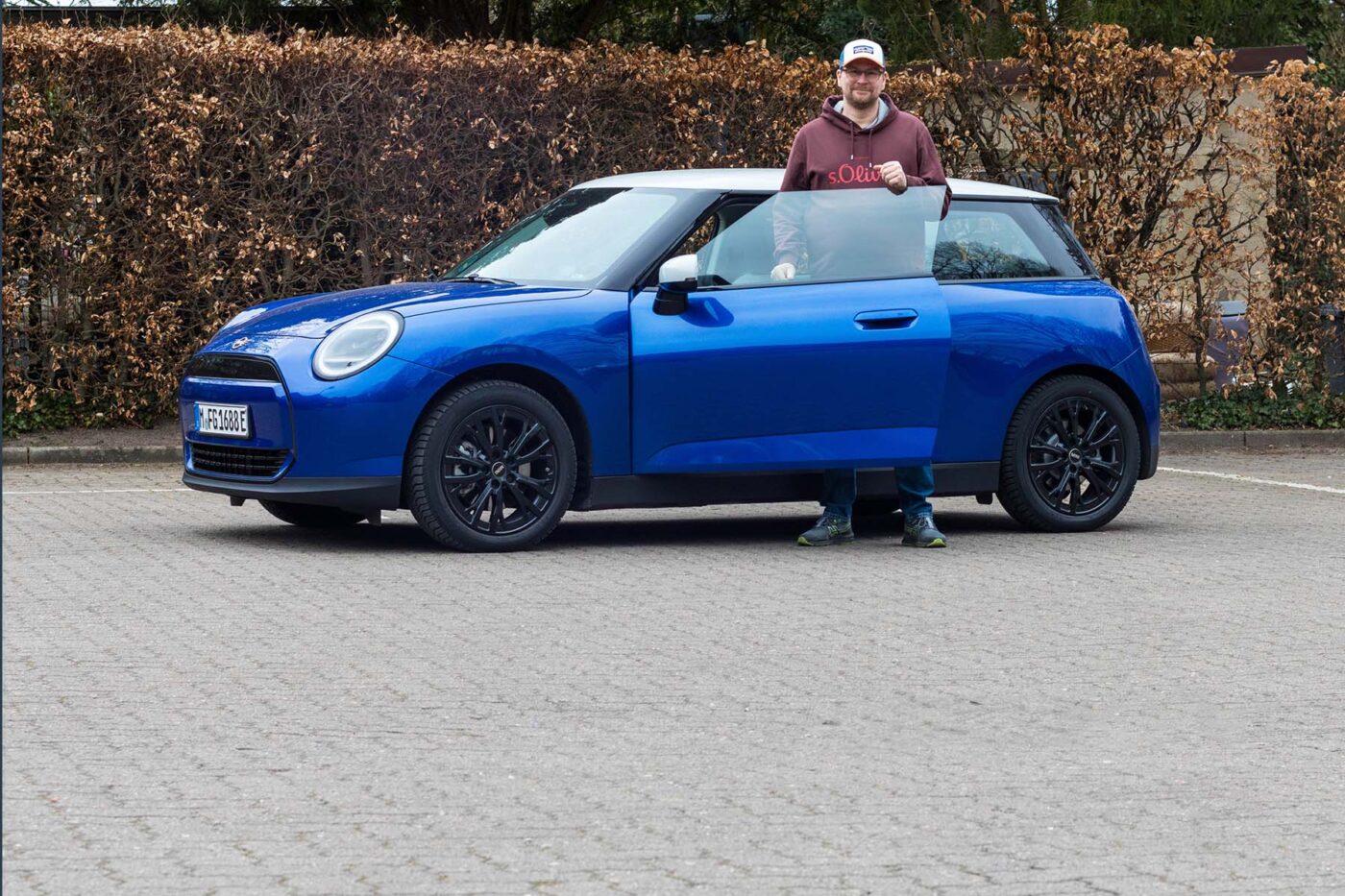
Mini Cooper E review: The charm remains – but what does the technology upgrade have to offer?
The BMW Group has shelved its plans to produce Mini brand electric cars at its plant in Oxfordshire, England. While the predecessor of the electric Cooper still came from the UK, that no longer applies to the new edition. It will now be built exclusively by Spotlight Automotive, a joint venture between BMW and Great Wall Motor, in Zhangjiagang, China.
With the Ora 03, Great Wall Motor also offers a small electric car with a retro look that is somewhat reminiscent of the Mini. However, despite the co-operation and similar specification on paper, the two electric cars go their separate ways technically. In my overall impression, the Ora 03 – I can reveal this much in advance – is clearly a step behind the Cooper E. So the focus of this review is to compare the new Cooper E with the previous generation of the electric Mini.
Design: evolution instead of revolution
Even at first glance, it is clear that not much has changed. The short overhangs and the almost kart-like profile remains. The dimensions of the model have only increased slightly; however, the overall lines now appear clearer, tidier and more mature.
The differences lie in the details: although the classic round headlights at the front have been kept, the radiator grille has been given some edges and has become a striking ‘octagonal grille’ which, together with the headlights, characterises the front end. In addition to the significantly more angular exterior mirrors, the door handles have also been integrated flush with the surface. The new Cooper generation also breaks with the previous brand design of the triangular rear lights, with the implied British flag also giving way. Depending on the equipment, the rear lights can be configured with different light signatures.
High degrees of customisation
In any case, Mini put personalisation right at the top of the list during development. It is, then, hardly surprising that the four equipment lines ‘Essential Trim’, ‘Classic Trim’, ‘Favoured Trim’ and ‘John Cooper Works Trim’ can be further customised to suit individual requirements. However, not everything can be combined with everything else. Too bad – it means the configurator can quickly drive you crazy.
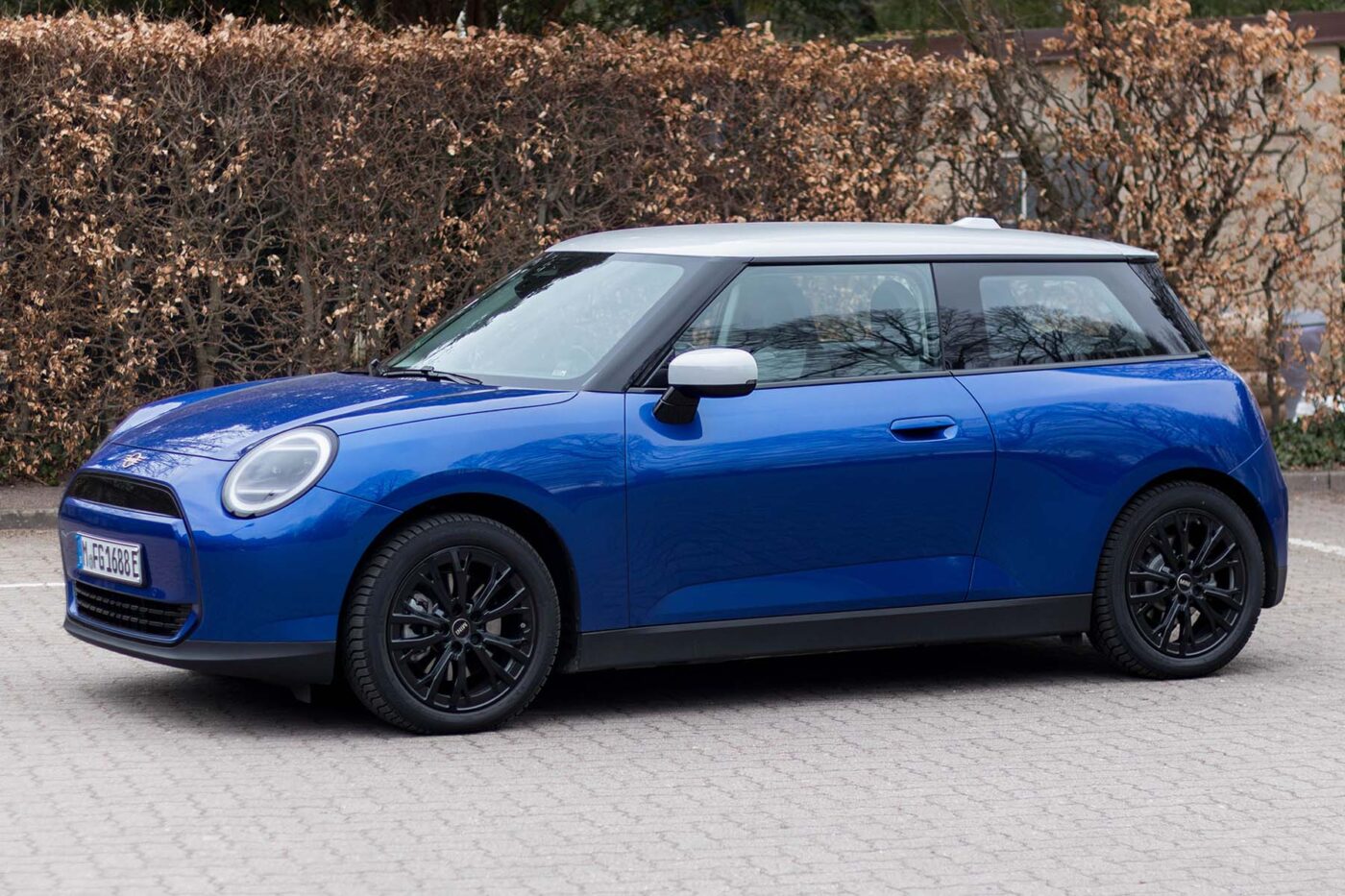
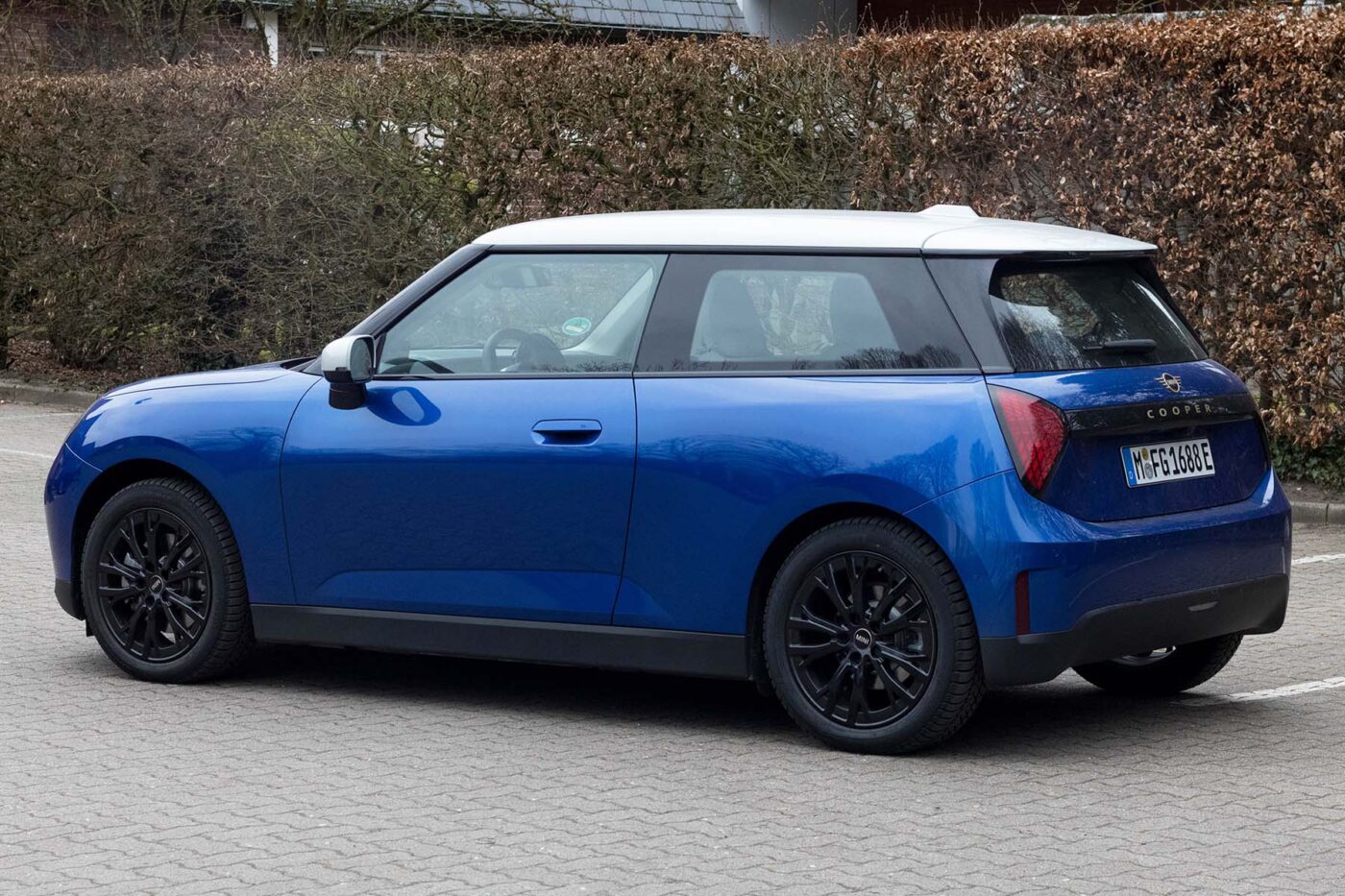
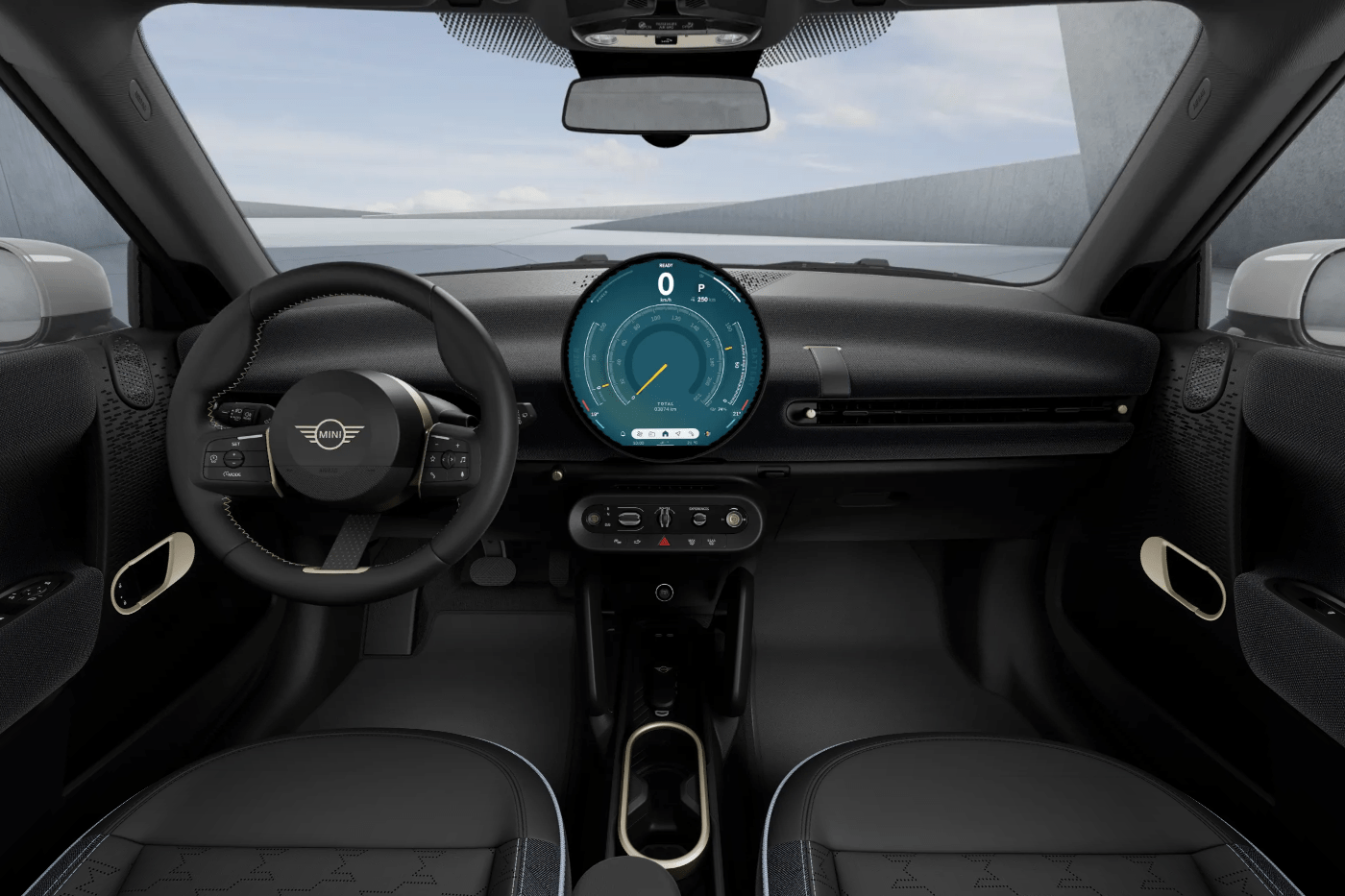
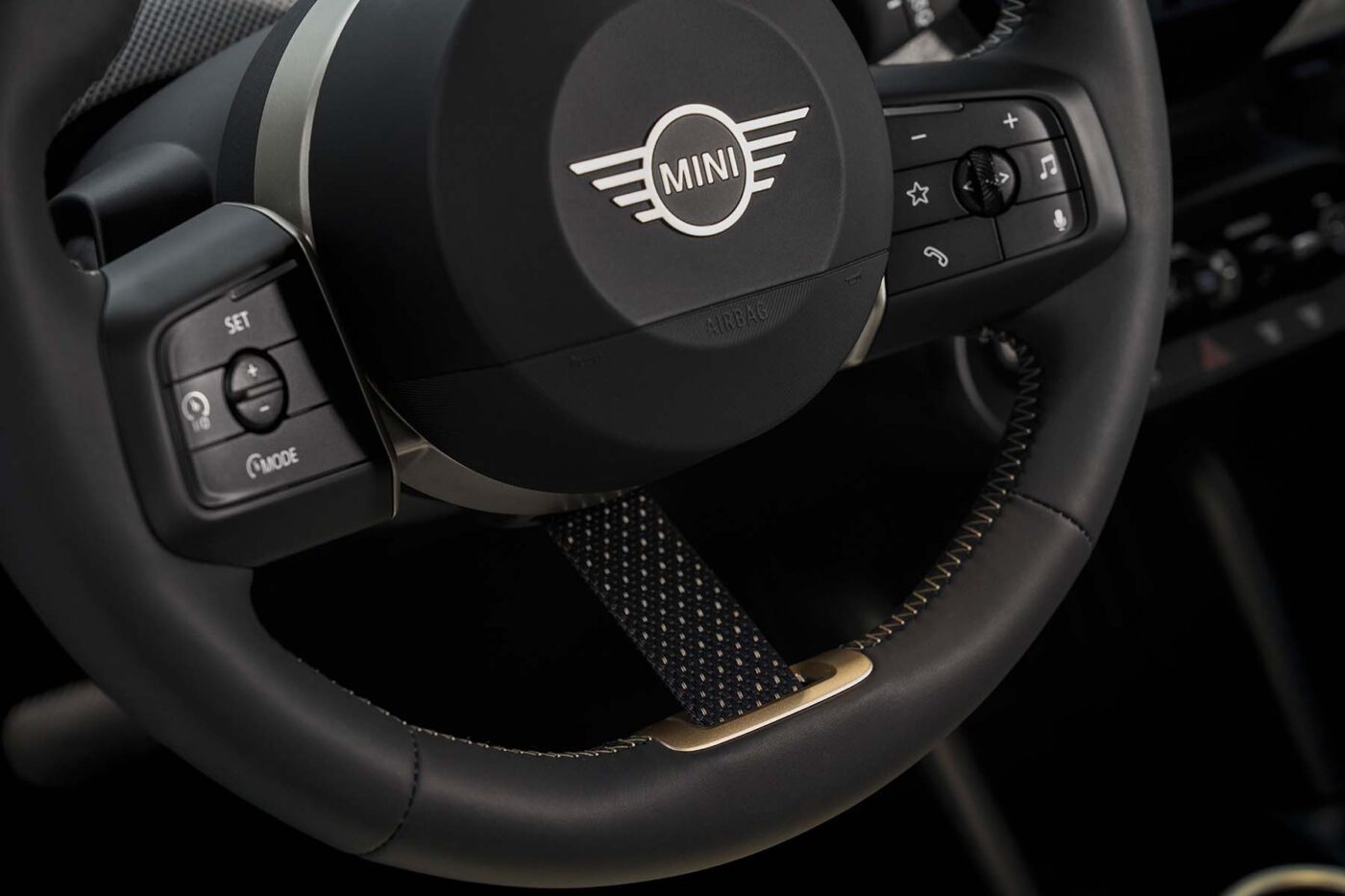
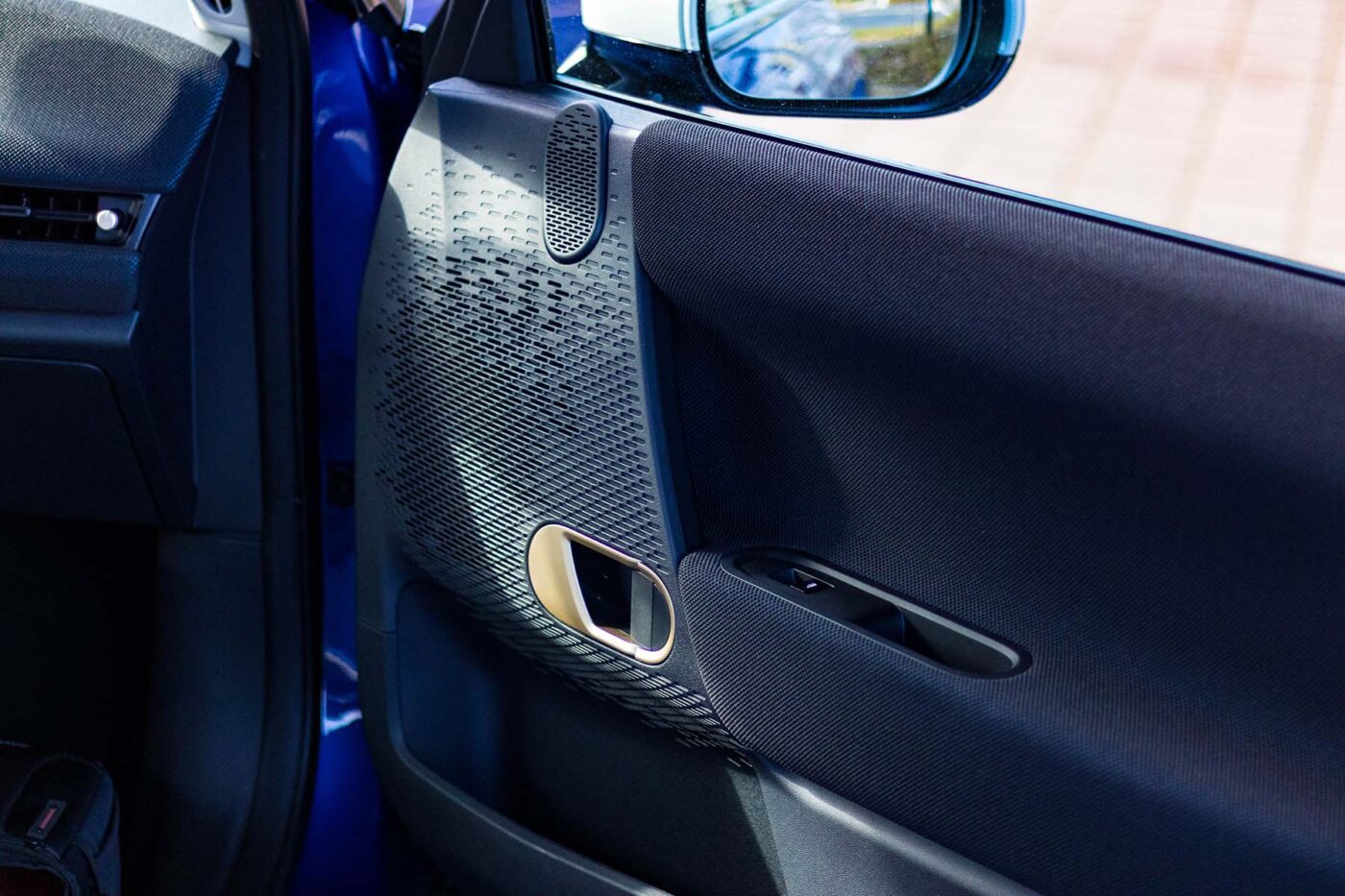
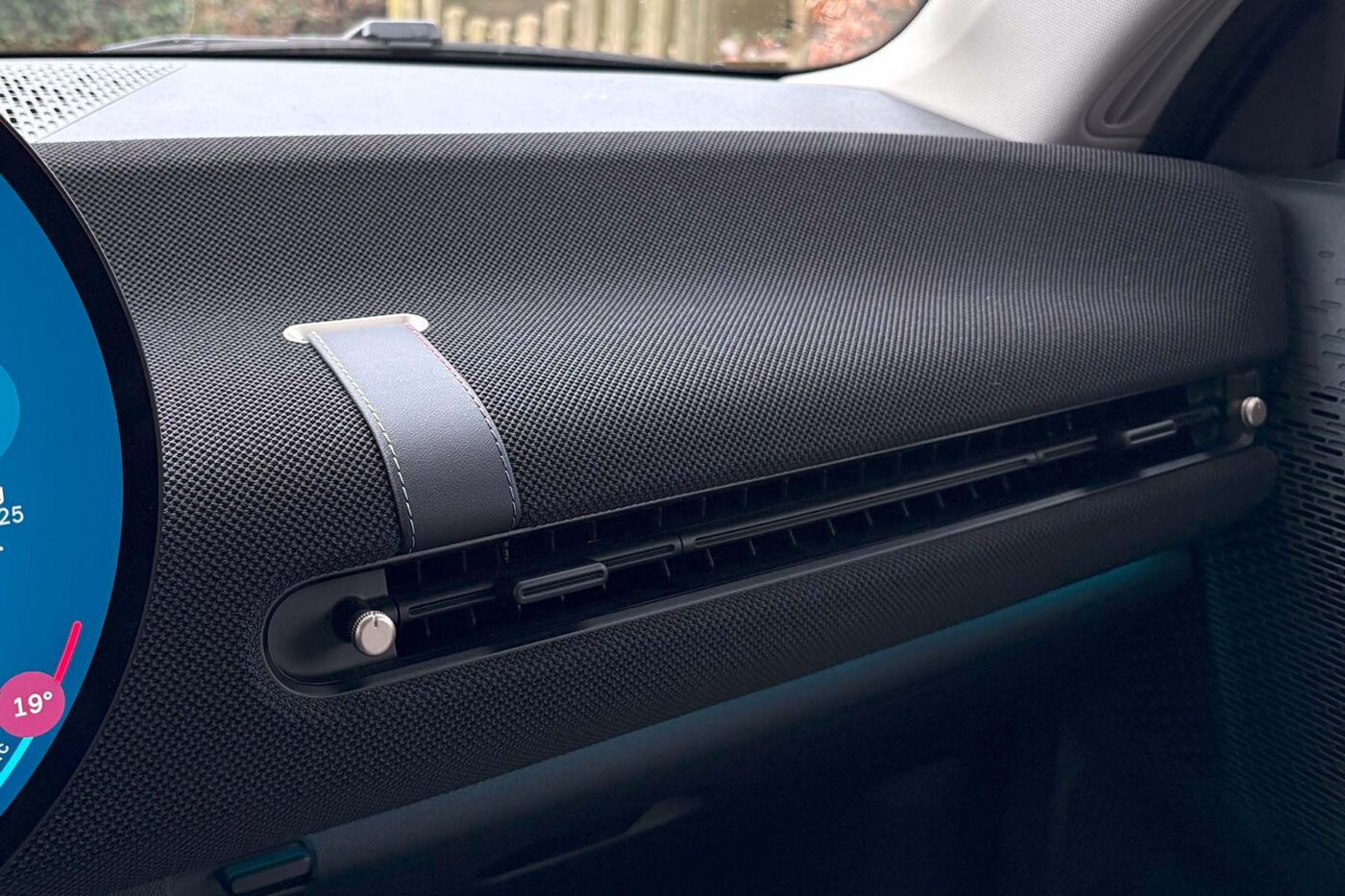
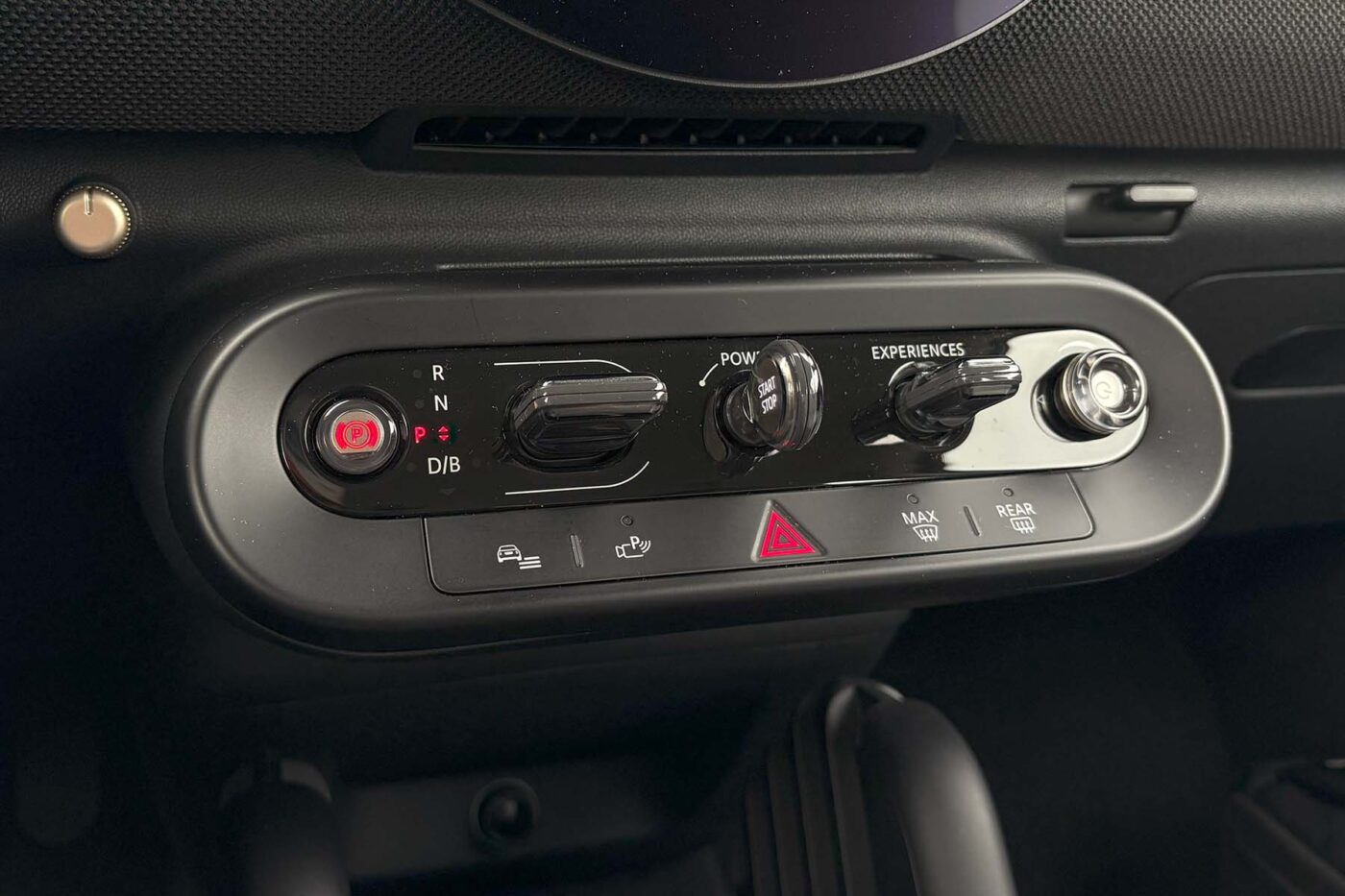
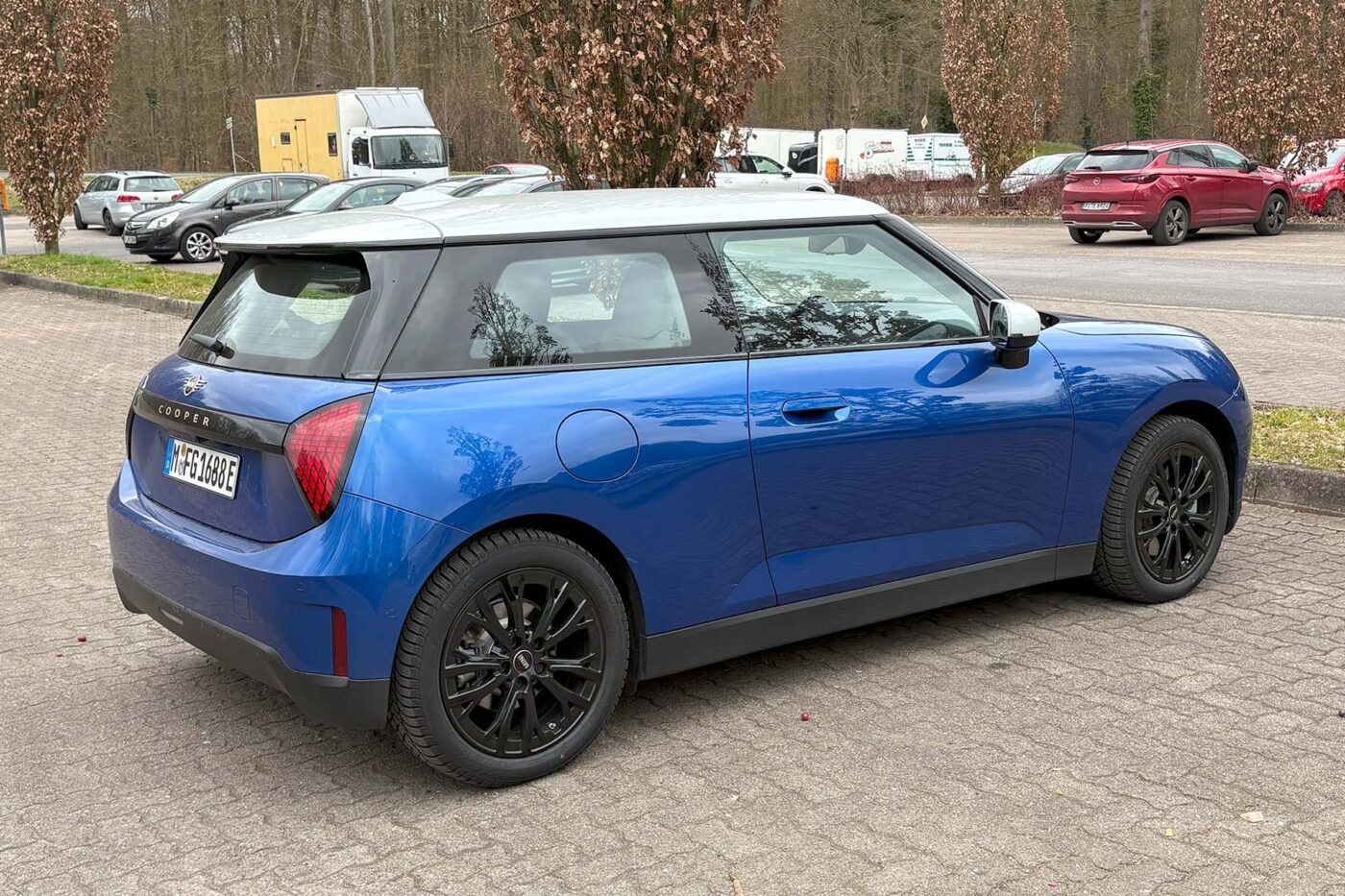
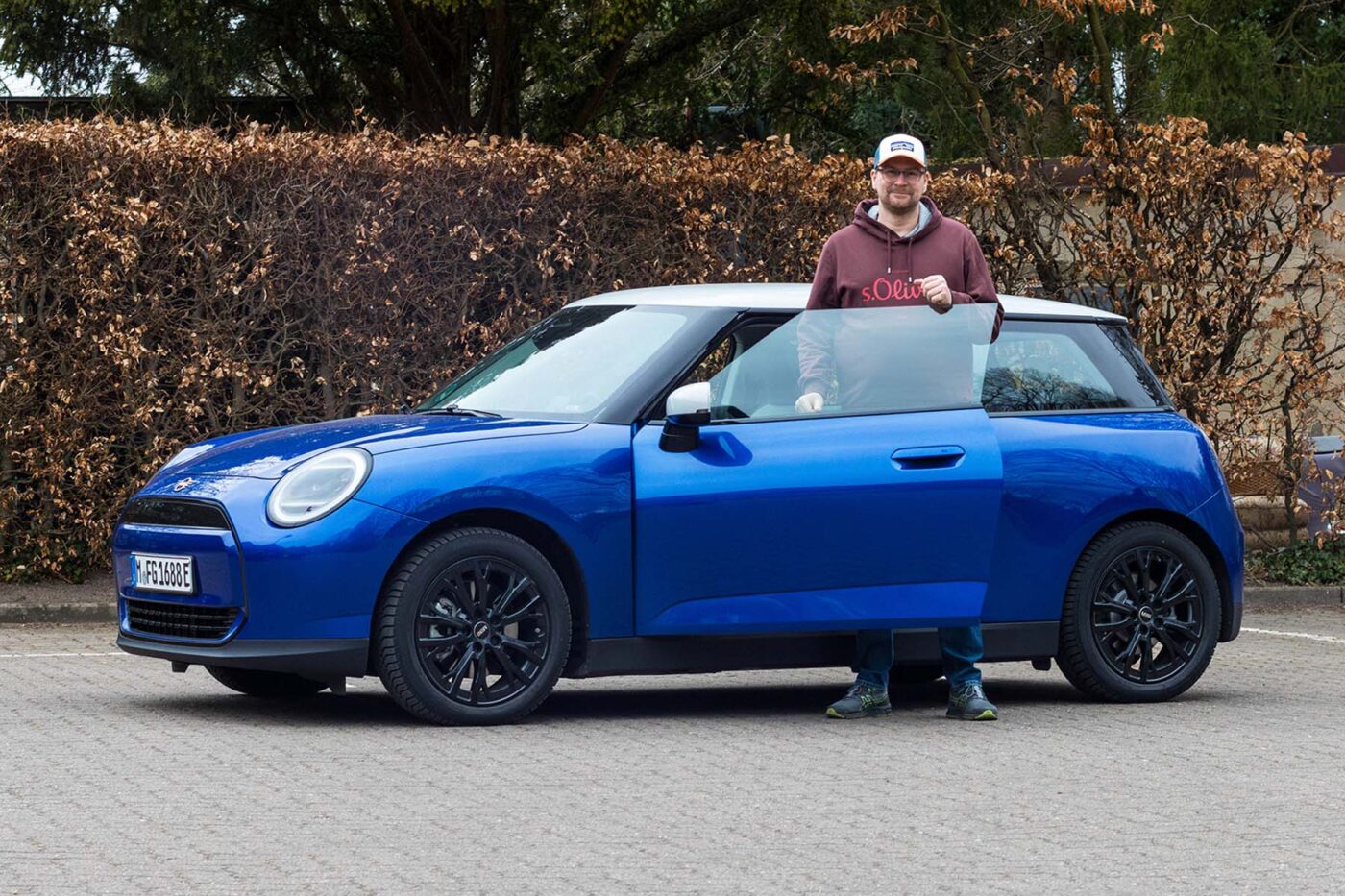
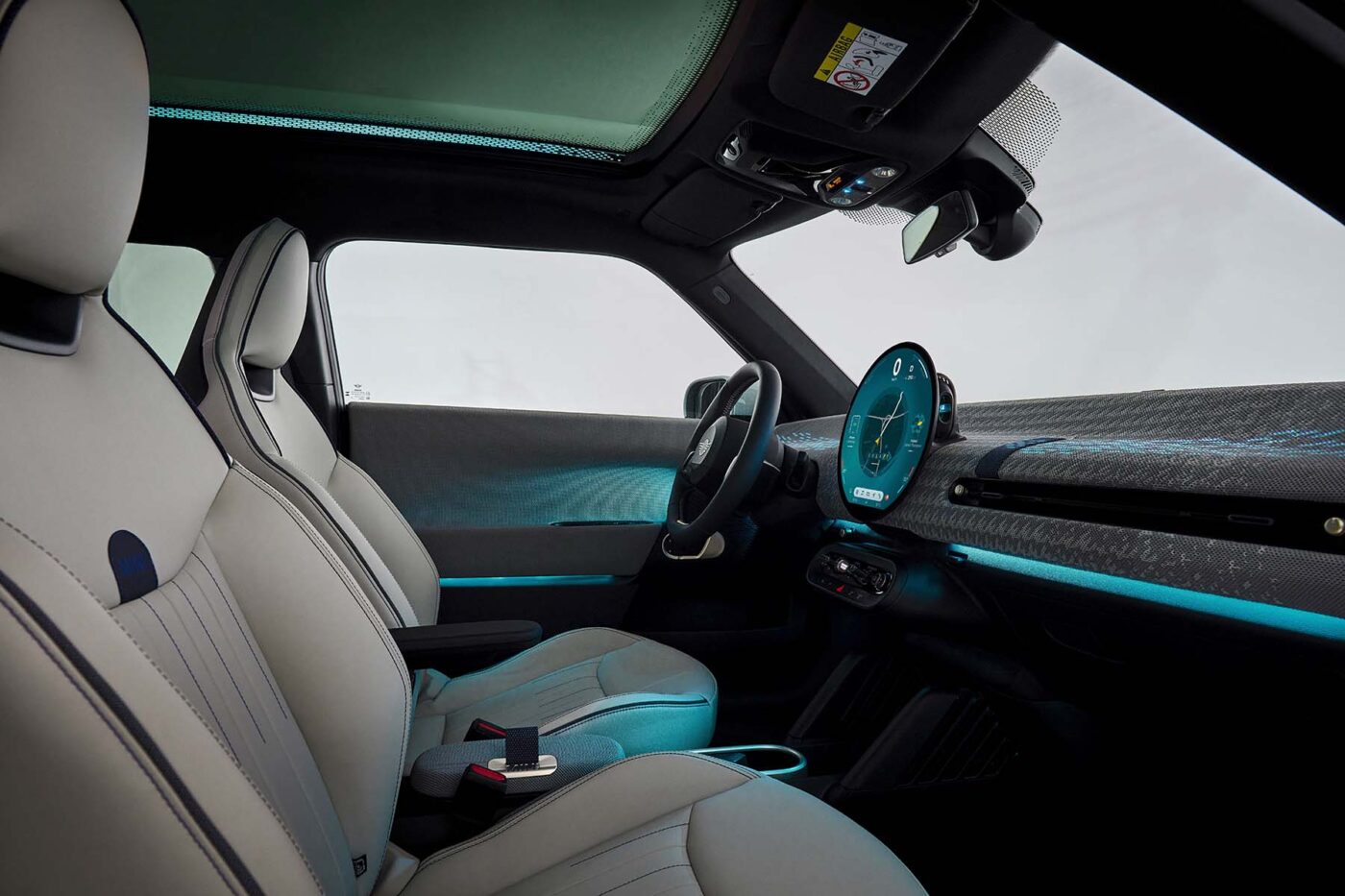
In front of me was the Mini Cooper E in the Classic Trim in the colour ‘Blazing Blue’ with white wing mirrors and roof. However, the highlight of the current Mini generation – in the case of the test car in the colour anthracite – is the interior. The now free-floating 240 millimetre diameter OLED display is particularly striking. Below this is a newly designed toggle bar – Mini remains true to itself here, too – with five switches that house the parking brake, gear selector, start/stop switch, Experience mode selection and volume control functions. The driver information display has been omitted; instead, Mini offers an optional head-up display. The cockpit has been significantly streamlined overall and no longer appears overloaded.
Despite the significant reduction in displays and controls, Mini has not lost its attention to detail. For example, the optional projector on the back of the OLED display bathes the dashboard in different colour worlds and patterns. The lower spoke on the three-spoke steering wheel has been replaced by a textile band – which can also be found above the glove compartment. The choice of materials and workmanship is impressive: textile surfaces with a knitted structure, the carefully crafted trim elements already mentioned, and the ambient lighting create a harmonious and, above all, high-quality overall look.
Pure driving pleasure
If you want even more individuality, you can choose between various ‘Experience Modes’. Although these do not affect the driving characteristics, they do adjust the lighting in the interior, among other things. For different driving characteristics, one of the ‘Mini Modes’ must be selected – yes, even I had to figure it out first – which in turn allows colours and displays to be changed. Not to mention the matching sounds, which is thankfully only annoying at the start and fades away as the speed increases.
Among the driving modes, the ‘Core Mode’ is mainly suitable for longer journeys. Instead of driving dynamics, the focus here is on comfort. The mode does its job well, at least when driving on the motorway. On city and country roads with lots of bends, however, I found the suspension too spongy and the steering too indirect.
However, the ‘go-kart mode’ provided the greatest driving pleasure. In this mode, concessions must logically be made in terms of suspension comfort. The Mini is as hard as a board on the road and manages to bring the familiar ‘go-kart’ feeling to the road. Tight steering underpins the sporty driving experience – like a little cornering predator. Did I have fun? You’ll have to visualise the grin on my face at this point. If you don’t like the standard settings in this mode, you can still customise the suspension or the driving dynamics to suit your own needs. Also a success: The new recuperation – fixed or adaptively adjustable – works sensitively and enables genuine one-pedal driving.
Performance and range: sufficient
Regardless of which driving mode you ultimately choose: The Mini Cooper E continues to be powered by an electric motor on the front axle with an output of 135 kW. Acceleration from 0 to 100 km/h also remains at 7.3 seconds. The top speed is 160 km/h – perfectly adequate, as my test showed. I didn’t miss anything. If that’s still not enough for you, there’s more from the Cooper SE variant, which delivers 160 kW, 6.7 seconds from 0 to 100 kph and a maximum of 170 km/h. And the John Cooper Works variant offers even more with 190 kW, 5.9 seconds and a top speed of 200 km/h.
| Cooper E | Cooper SE | JC Works Electric | Cooper SE (old) | |
|---|---|---|---|---|
| Drive | FWD | FWD | FWD | FWD |
| Power | 135 kW | 160 kW | 190 kW | 135 kW |
| Top speed | 160 km/h | 170 km/h | 200 km/h | 150 km/h |
| Acceleration | 7.3 s | 6.7 s | 5.9 s | 7.3 s |
| Battery (net) | 36.6 kWh | 49.2 kWh | 49.2 kWh | 28.9 kWh |
| Battery (gross) | 40.7 kWh | 54.2 kWh | 54.2 kWh | 32.6 kWh |
| Range (WLTP) | 300 km | 400 km | 371 km | 234 km |
| Charging capacity AC | 11 kW | 11 kW | 11 kW | 11 kW |
| Charging time AC (0-100 %) | 4:15 h | 5:15 h | 5:15 h | 3:30 h |
| Charging capacity DC | 75 kW | 95 kW | 95 kW | 50 kW |
| Charging time DC (10-80 %) | 28 min | 30 min | 30 min | 35 min |
| Price | 28,150 euros | 31,650 euros | 40,650 euros | n.a. |
However, all the driving fun comes to an end – and often sooner than you would like – thanks to the Cooper E’s range. It is not for nothing that Mini describes the model as ‘geared towards urban driving pleasure’. Up to 300 kilometres are possible with the 40.7 kWh battery (gross, 36.6 kWh net) according to WLTP. In practice, depending on driving style, weather conditions and route profile, this leaves around 210 to 240 kilometres. A bigger reason for choosing the Cooper SE variant is probably not so much the extra power, but the significantly larger battery, which then offers 54.2 kWh (gross, 49.2 kWh net). With it, you can drive up to 100 kilometres further. Compared to the competition, the Mini has nothing to hide.
Small charging restraint
If the battery is empty, it can be fully charged at the wallbox at home with up to 11 kW in a good 4:15 hours. A 22 kW on-board charger would have been desirable here, which is also not available for the large battery. Not a dealbreaker. However, with the urban orientation, it would have been possible to make room at the charging point more quickly, especially at public AC charging points, or to gain more range in the same time.
This is particularly true as the DC charging capacity is only a maximum of 75 kW. The charging process from ten to 50 per cent takes a good eleven minutes, and a full 28 minutes to 80 per cent. This puts the Mini Cooper E within the usual 30 minutes for the charging hub – but it should be a little quicker. Especially given the available range. The fact that the predecessor needed 35 minutes is only of limited comfort. Here, too, the Cooper SE with a larger battery is more likely to be chosen, which, with its maximum 95 kW, only needs 30 minutes to charge from ten to 80 per cent. However, the charging performance is not a quantum leap either.
Regardless of whether the battery is small or large, preconditioning helps to maximise charging performance. To do this, route planning must be activated and charging stops either automatically scheduled or a charging station explicitly selected. Mini allows you to filter charging stations by power, charging connection or access type (Plug&Charge, app, RFID card). Unfortunately, this filter has to be reset every time you start a new journey. On the other hand, the route planning with charging stops provides a very good overview of how many per cent you will arrive at the respective charging station with, how much you need to charge and how long the stop will ultimately take before you can continue your journey.
Infotainment, connectivity and assistants
However, I sorely missed a SoC display showing the current battery status on the overview page of the huge display. You have to click your way through the rather convoluted infotainment menu for this. With a better UI, you wouldn’t have to scroll for a very long time to access certain information. What’s less convincing is the presentation of Apple CarPlay or Android Auto, which sometimes look squashed on the round display. Nevertheless, the specially developed ‘Mini Operating System 9’ based on the Android Open Source Project runs quickly and smoothly.

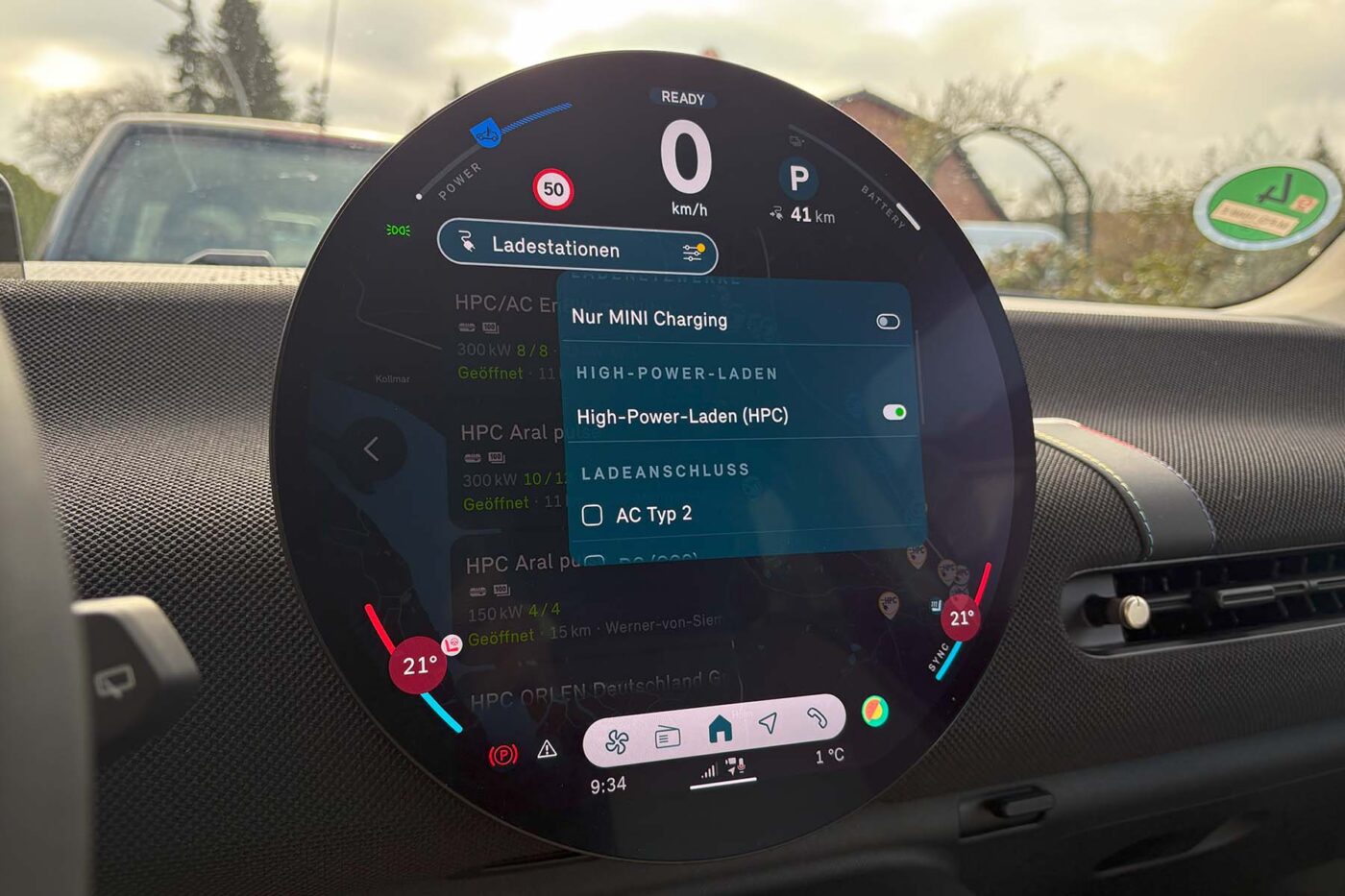
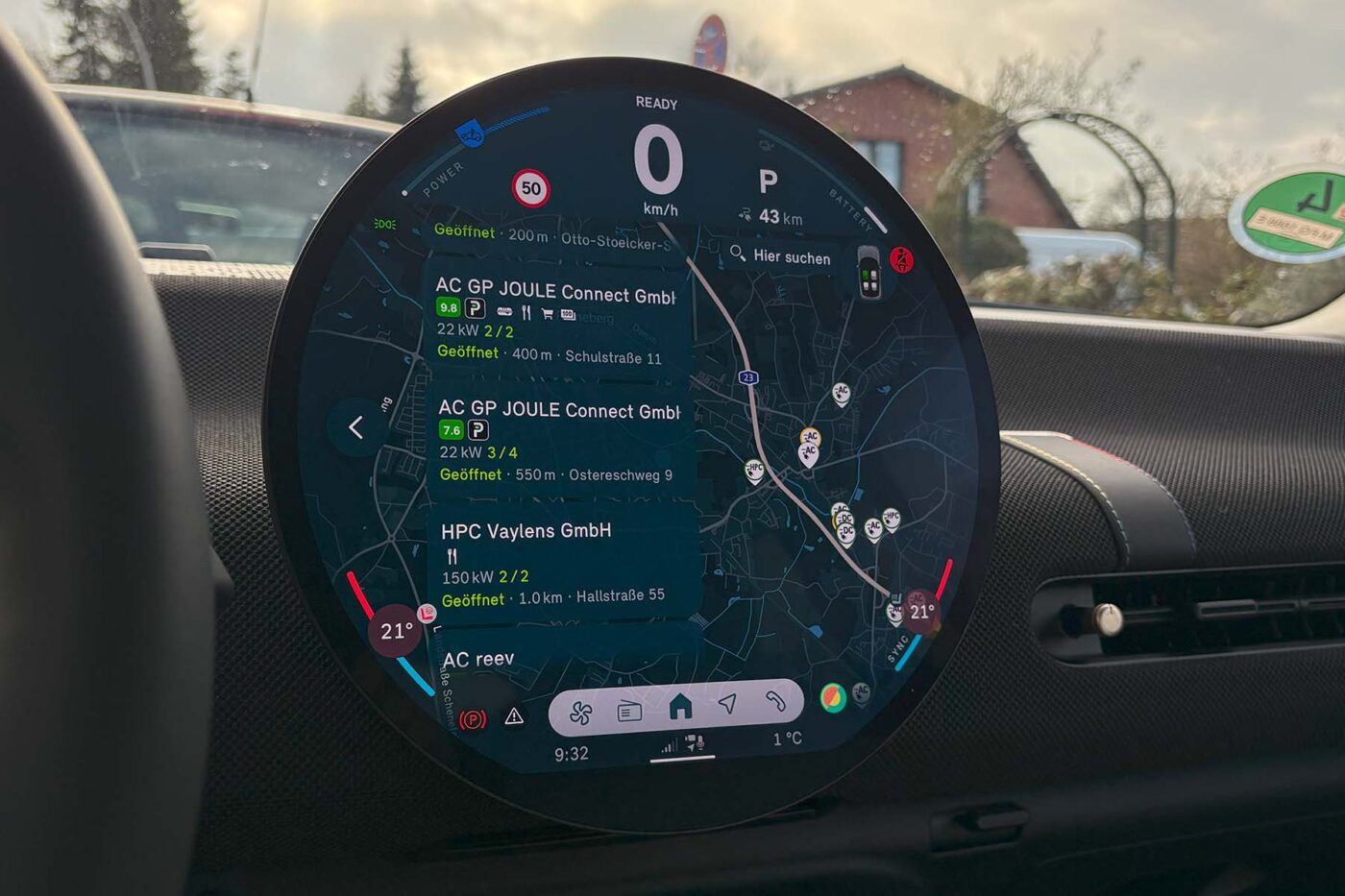
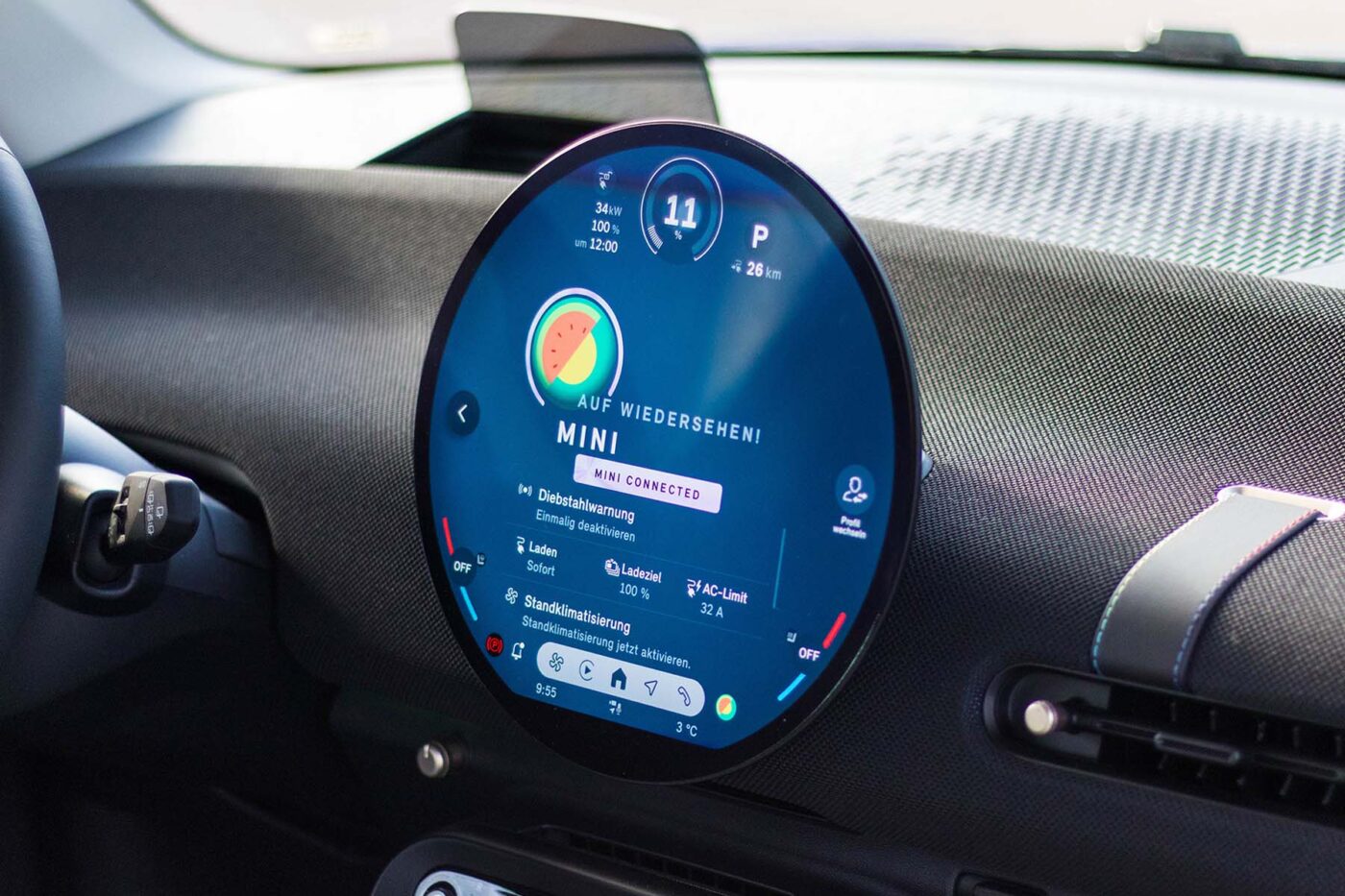
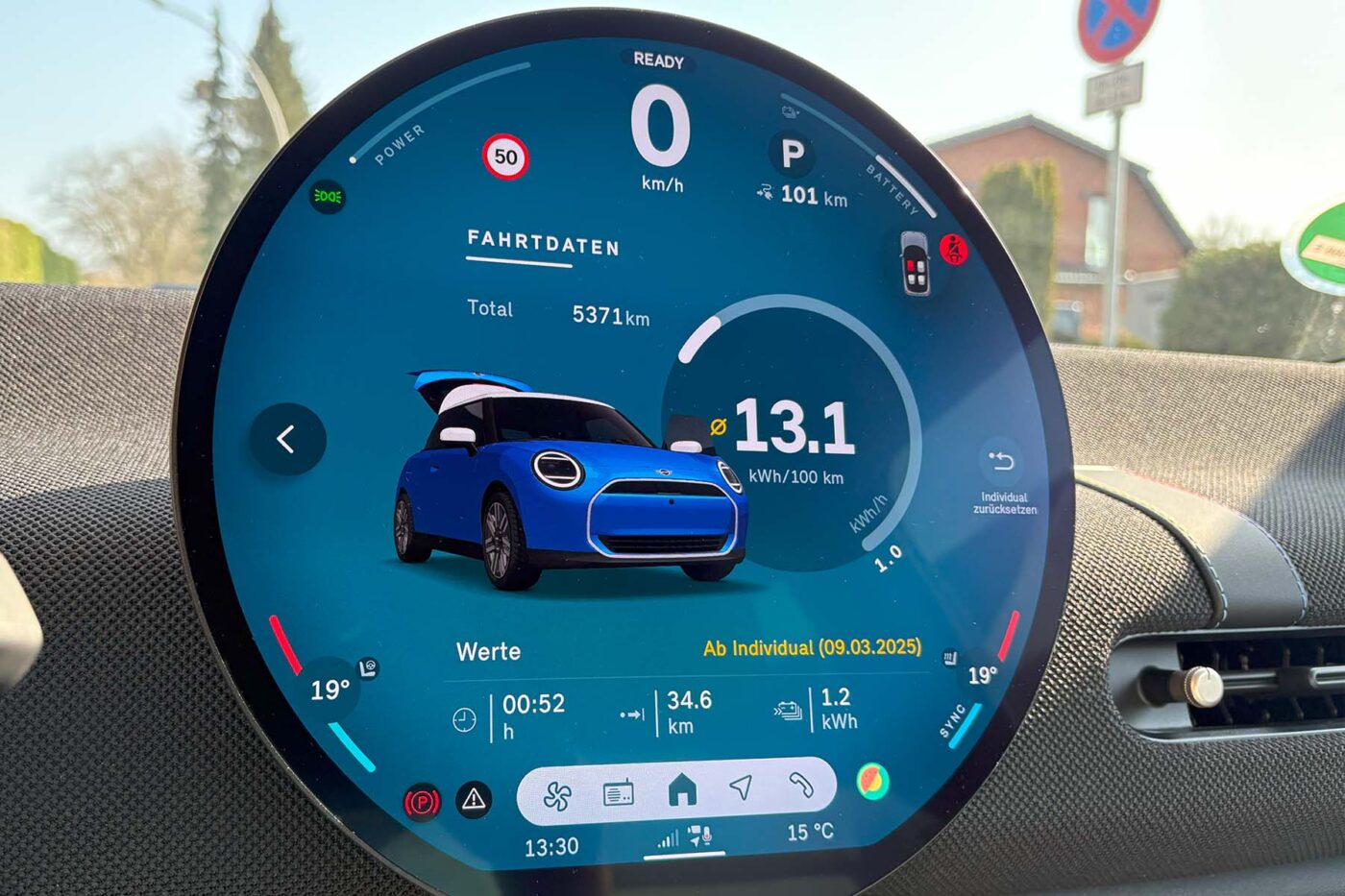
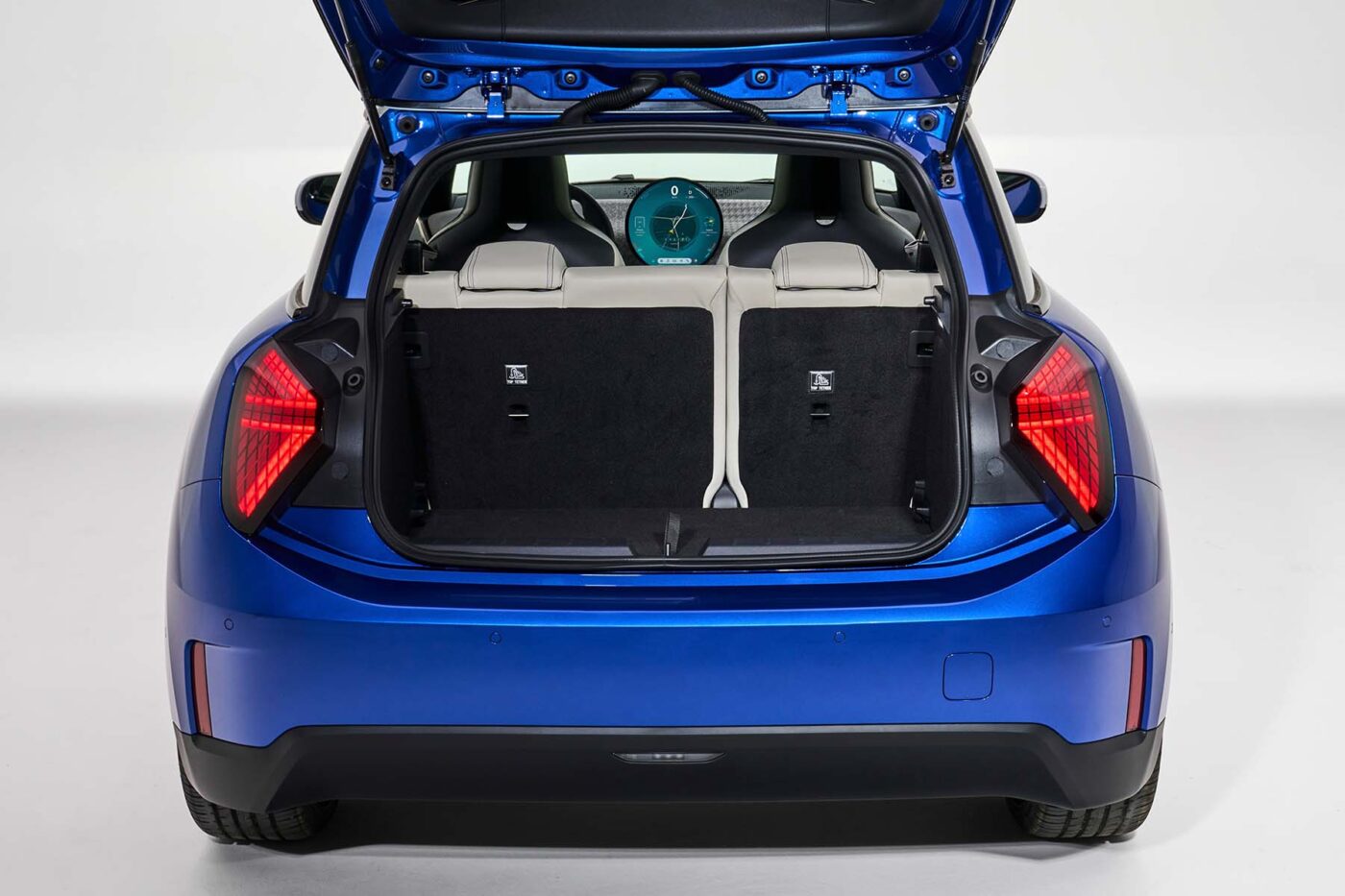
At this point, I could tell you a lot more about the high level of connectivity and the Mini’s range of services – whether it’s bookable access for gaming, music and video streaming or the ‘Intelligent Personal Assistant’, which continuously learns on repetitive routes and can use geo-based data to recognise, for example, that the window should be opened automatically when entering the car park. And then there are the assistance systems, which did a very good job. Lane departure warning, cruise control and the stop-and-go function in traffic jams always worked reliably – but that’s exactly what you would expect from the BMW Group. Nevertheless, it is amazing what the BMW brand offers in a small electric car – and thus significantly more than the competition at present.
Conclusion
With the Cooper, Mini has created a presentable small electric car. However, the model is not a space miracle. The rear compartment is still very cramped. Tall people will find it difficult to take a seat in the back. The boot volume of 210 litres is also still very modest.
The strengths, on the other hand, lie in the high level of customisation, the extensive connectivity, the wide range of assistants – and finally, perhaps the most important point for Mini fans – the enormous driving pleasure. And all this is available at what I consider to be a fair price. Even the basic Cooper E, starting at 28,150 euros, offers almost all assistance systems as standard. For more range, we recommend the Cooper SE, which is available from 31,650 euros.
However, if you want the head-up display, wireless charging for your smartphone, the Mini Experience Modes or even heated seats for the driver and front passenger, regardless of the variant, you will have to book one of the extra packages. The same applies to changes to the exterior and roof colour, wheel designs or the interior, which quickly drive up the price. Whether fleet operators include the lifestyle vehicle in their fleet will ultimately depend on one thing above all: the most attractive leasing rate possible.

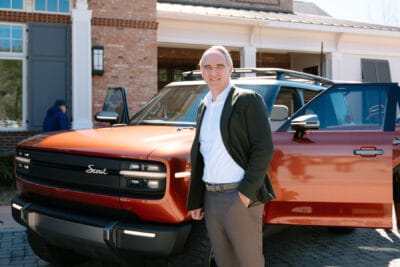
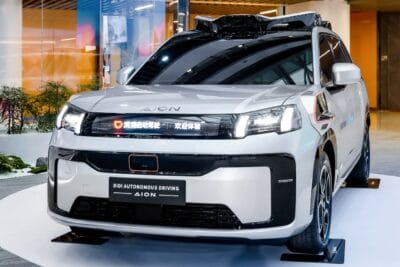
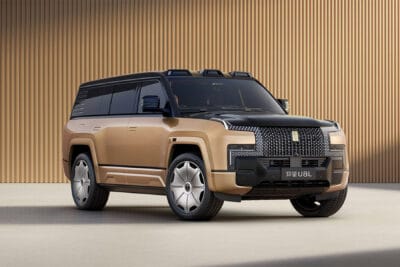
0 Comments